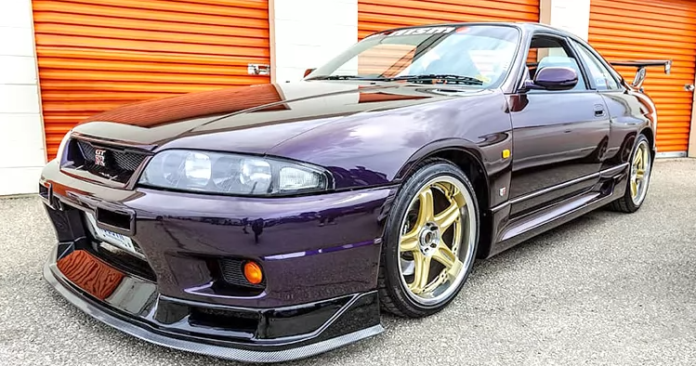We have repeatedly expressed dissatisfaction with the Imported Vehicle Safety Compliance Act (often referred to as the 25-year import law). This ridiculous regulation from 1987 prohibits people of the United States from importing non-conforming cars until they are at least 25 years old (a completely arbitrary number). We’d love to see Donald Trump do something about this ridiculous restriction, but we can only import vehicles that are at least ten years old until then. There are many incredible Japanese cars that we’ve never seen in the United States, so if we could travel back in time, these are the five JDM cars we’d import today.
The Nissan Skyline GT-R from the R34 generation is an obvious choice. In the United States, we can currently import the R32 generation GT-R, produced between 1989 and 1994. The R33 generation is still off-limits until 2020, but the R34 will have to wait even longer. The R34 won’t be federally allowed to import until 2024, at which point, based on present patterns, they’ll most likely be $200,000 automobiles. Even though their current costs have already escalated to roughly $75,000 to $150,000, we wish we could get our hands on an R34 right now. This is arguably the most iconic Japanese car of all time at JDM Sport Classics, and like most aficionados, we’d love to import one.
The Nissan Stagea is the closest thing to a Skyline waggon that exists, despite its appearance. The WC34 Stagea was built on the R33 platform and featured the same RB26DETT 2.6-liter twin-turbo inline-six engine as the GT-R. The Stagea Autech 260 was the name of this variant. The Stagea came with a four-speed automatic or a five-speed manual transmission and was available in RWD or AWD. Although it isn’t the most attractive car on the list, we have seen a few examples with the R34 GT-R front end swapped in. As a result, this JDM waggon is the coolest on the planet.
Not every JDM car on this list is a sports car. We enjoy a little luxury, and the Toyota Century is undoubtedly one of Japan’s most opulent automobiles. From 1997 through 2016, the second-generation Century was constructed. This is Japan’s sole front-engine, rear-wheel-drive production vehicle with a V12 engine. The 5.0-liter 1GZ-FE V12 engine developed 276 horsepower with a four-speed automatic transmission. With an updated six-speed automatic, power was raised to 305 horsepower. This is one of the world’s smoothest engines, yet we never got it in the United States.
The only Toyota sedans we are familiar within the United States are the Corolla, Camry, and Avalon. Even while the Chaser doesn’t appear to be any more thrilling than any of its US market competitors, it is vastly superior. From 1996 until 2001, the 6th generation Chaser (the X100 chassis) was produced. The Chaser Tourer V Aero was the coolest model. The 2.5-liter 1JZ-GTE turbocharged inline-six engine produced 276 horsepower and 280 pound-feet of torque in this “boring” car. This automobile also came with a five-speed manual transmission, making it a highly comfortable and quick sleeper sedan.
The RSX Type S was one of our all-time favourite Acuras. The Honda Integra Type R, on the other hand, was an even better version in Japan. Our favourite was the DC5 generation, which was exclusively made for the Japanese market. The DC5 was equipped with a 220 horsepower K20A four-cylinder DOHC i-VTEC engine. This is more powerful than a new Honda Civic Si. Honda has a history of providing superior cars to Japan, and the DC5 is no exception. Unlike the RSX, the Integra has Recaro seats (blue or red), four-piston Brembo brakes, stronger suspension, and a limited-slip differential. Even though the US obtained a car that was identical to Japan’s, it was not as good.






